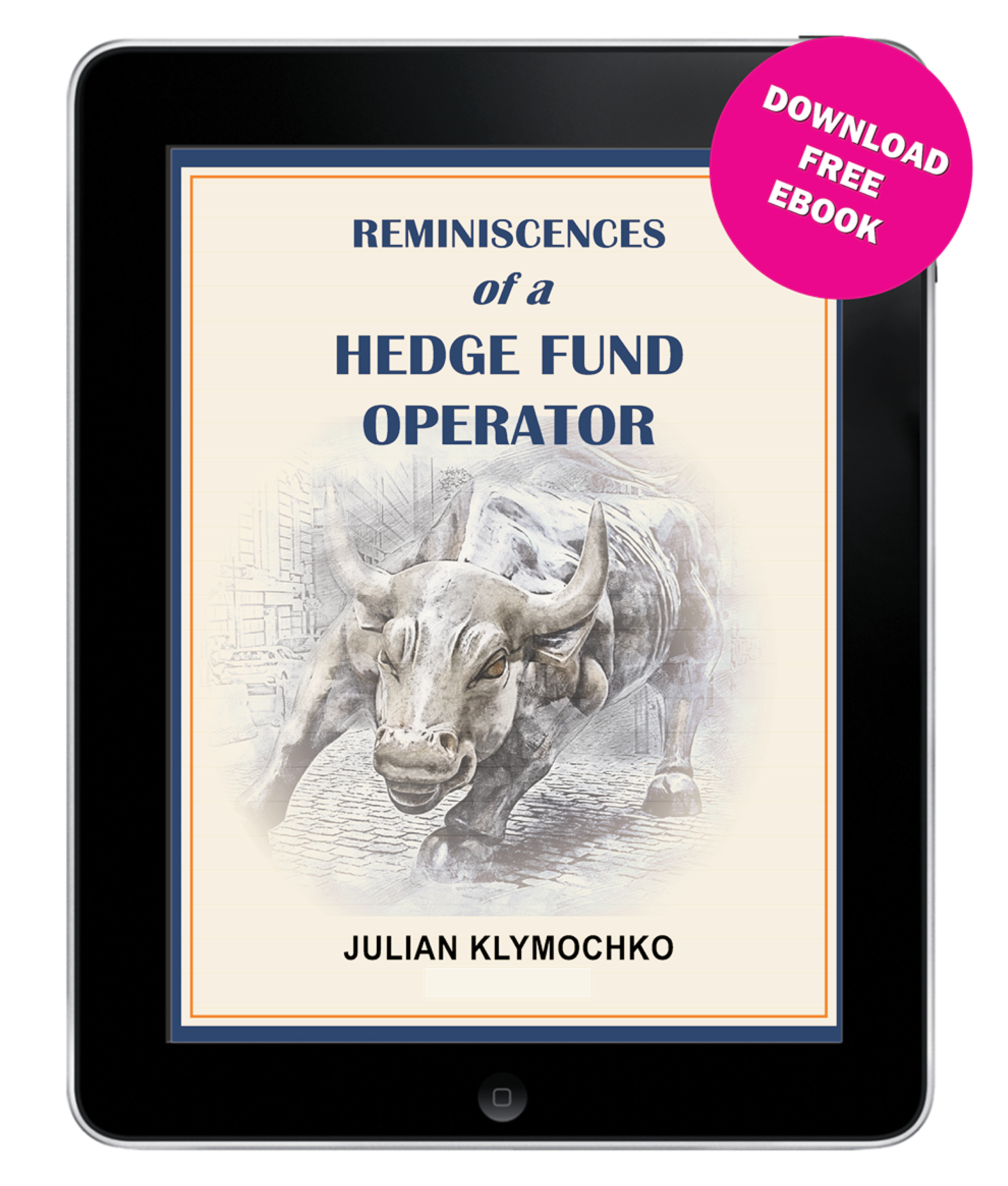August 13, 2019 – I launched my first hedge fund in January 2012. I was 28 years old. Prior to that, I had co-managed a systematic market neutral hedge fund for a few years. A number of wealthy investors decided to back my new fund to the tune of $5 million to run a risk arbitrage strategy, which bets on mergers, acquisitions, takeovers, liquidations, bankruptcies and other event-driven trades.
As a young hedge fund manager eager to prove my skills, I did everything I could to make the fund a success. I set my daily alarm to 4:00 am and was in the office every day by 5:00 am. Evening, weekend and holiday work was a must. I was even at my Bloomberg terminal every Sunday evening, preparing for Monday’s trading session.
For the first four months, I woke up sick to my stomach every morning. The pressure was intense. Nonetheless, I worked through it, focused on my goal of becoming a successful hedge fund manager.
Off to a Good Start
The first year went about as good as one could hope for. The fund finished its inaugural year up 11.4%, net of its 2% management fee and 20% performance fee. It attained this return with only three down months, the worst of which was -1.1%. The fund achieved this return with an annualized standard deviation of only 4.1%. Its Sharpe ratio, a measure of reward per unit of risk, was near 3.
Things continued to go well for the fund. After 32 months, we were compounding at nearly 10% annualized (net of fees) with a standard deviation of less than 4%. We were showing investors steady gains with low volatility with our risk arbitrage investment strategy. Money came flowing in from new investors and the fund grew six-fold. Our strategy was working. Everything was going right.
It’s All Over
In September 2014, the honeymoon period ended. We had a merger arbitrage trade on to profit from Auxilium Pharmaceuticals’ friendly acquisition of QLT Inc. Back in June 2014, Auxilium struck a friendly deal to acquire QLT in an all-share deal at a 25% premium. An arbitrageur could profit from the deal by buying QLT stock and shorting Auxilium stock to earn the arbitrage spread that existed between the two securities. We held a large position in the merger arbitrage trade for the fund, consisting of a long position in QLT and a short position in Auxilium.
The worst thing that could ever happen to a merger arbitrageur is when an interloper submits an unsolicited offer for the acquiror (i.e. the stock you are short) in a merger arbitrage trade. Not only would you lose money on your short position, which would rally against you, but you’d also lose money on your long target position, which would plummet as the deal broke.
Merger arbitrage requires stringent risk management. You’re always thinking about what could go wrong. I played out all the potential scenarios in which the QLT / Auxilium deal could break. Could Auxilium itself attract takeover interest? Not with its current product suite, I thought (don’t research Auxilium’s product, and if you do, definitely don’t google it). I thought fundamentally Auxilium was not an attractive acquisition candidate.
However, I had an inkling in the back of my mind that there was a tiny risk that an interloper could make a hostile play for Auxilium. In 2014, a merger mania was taking place in the pharmaceuticals sector. Industry giant, Valeant Pharmaceuticals, run by CEO Mike Pearson, was seemingly buying every company in sight. Endo International, another deal-hungry pharmaceutical company run by Mike Pearson-protege Rajiv De Silva, was also pursuing an aggressive acquisition strategy.
I couldn’t shake the feeling that one of these deal junkies could potentially make a play for Auxilium, despite what I viewed as poor fundamentals of the company that would make it an unattractive acquisition candidate. We began buying call options on Auxilium to protect the fund in the scenario in which Auxilium caught a hostile bid.
After the market close on September 16, 2014, disaster struck. Endo International announced an unsolicited proposal to acquire for Auxilium at a 30.6% premium. This was the worst possible scenario for the fund. On Endo’s conference call to discuss the deal, CEO De Silva indicated that the offer was contingent on Auxilium dropping its acquisition of QLT. It was clear that Endo’s offer killed the QLT / Auxilium deal in which we had a sizeable position.
Getting My Face Ripped Off
The market reaction was swift. The next day, our long position, QLT, tanked -13.1%. Making matters much, much worse, we had our face ripped off with our Auxilium short position, which skyrocketed nearly 45%. The call options we bought to protect ourselves under this scenario, we simply didn’t buy enough. Ouch!
This was the worst day of my career, by far. I ran the numbers – I had lost my investors $1 million that day. Ironically, the term Auxilium is Latin for “help”, and I sure needed it.
The fund finished September down -3%. This was nearly triple the fund’s previous worst monthly performance of -1.1%. While stock market investors wouldn’t sweat a -3% drawdown, our investors were conditioned for steady gains.
When our investors received their monthly statements, they were angry. We hosted a conference call to talk with investors through what happened. Investors were livid and yelled at me. I felt like an idiot! My jerk of a brain told me, “Well you had a good run, kid. You’re done!”
I wasn’t done. The fund scratched and clawed its way back to finish the year up 4.2%. We followed that mediocre performance with a 10.9% annual gain in 2015 along with an award from BarclayHedge for a top event-driven fund for 2015.
Mistakes Were Made
What happened to Endo, the company that almost put an early end to my career?

In the five years since Endo announced the acquisition of Auxilium, Endo has had over $3 billion in goodwill impairment charges (write-downs of its acquisitions). Its stock is down -97%, representing a loss of $12 billion in market value. Endo’s $2.6 billion acquisition of Auxilium closed in January 2015 and by November 2015, it wrote off $531 million of Auxilium’s value. It’s fair to say Endo’s consolidation strategy did not work out and its acquisition of Auxilium was ill-advised. The deal shouldn’t have happened, but it did, and I learned a painful lesson.
Auxilium Taught Me
If you’re an investor, you will face setbacks. It is inevitable. You have to roll with the punches. The number one key to longevity in investment management is resilience to the many setbacks you’ll endure. Over time, a hedge fund manager accumulates battle scars – some memorable, and some forgotten. The first time I lost $1 million will always stick with me.
-Julian



